How to Choose the Best Cordless Table Blender for Smoothies, Soups & More
 2025.11.06
2025.11.06
 News
News
Cordless Table Blender Design: Compact, Portable, and User-Friendly
Compact Design for Modern Kitchens
The design of a cordless table blender is a cornerstone element that defines its practicality and appeal in modern kitchens. Compact design refers not only to the physical dimensions of the appliance but also to its ability to combine multiple functionalities within a reduced form factor. In contemporary kitchen environments, counter space is often limited, and users increasingly seek appliances that occupy minimal space while delivering maximum performance. Cordless table blenders are specifically engineered to meet these needs, balancing power, capacity, and aesthetics. The compactness allows the blender to fit seamlessly into small kitchen spaces, apartment setups, or minimalistic countertops without overwhelming the environment. For users who prioritize organization and tidiness, a compact blender design ensures that the appliance can be stored easily in cabinets, drawers, or shelves when not in use, maintaining a clutter-free kitchen while keeping it readily accessible for frequent use.
Material selection plays a vital role in achieving a compact design without sacrificing durability. High-grade plastics, reinforced glass jars, stainless steel blades, and corrosion-resistant components are carefully chosen to maintain structural integrity while reducing overall weight. Many cordless table blenders incorporate modular designs where jars, lids, and blades can be detached and reassembled, contributing to both portability and compact storage. Manufacturers often integrate internal design innovations such as optimized motor placement, minimalistic wiring, and efficient blade mechanisms to maximize performance in smaller housings. By doing so, the blender can handle a wide range of blending tasks, including crushing ice, pureeing vegetables, and mixing thick ingredients, without requiring a bulky frame. Compact design also improves the ergonomics of operation, as users can easily lift, hold, and maneuver the appliance with one hand. The positioning of buttons, speed dials, and controls is carefully considered to ensure intuitive access, even in tight spaces.
Another aspect of compact design is weight distribution and balance. A well-engineered cordless table blender distributes the weight evenly between the motor base and the jar, reducing strain during use and making it safer to operate. This design consideration ensures stability on countertops and prevents accidental tipping when blending heavy or dense mixtures. The aesthetics of compact design are also important, as contemporary consumers prefer appliances that blend seamlessly with kitchen décor. Smooth curves, sleek finishes, and minimalistic exteriors are often incorporated to create visually appealing products that align with modern interior design trends. Users appreciate that a compact cordless table blender does not merely serve functional purposes but also enhances the overall look of their kitchen environment, combining form and function in a single appliance.
Portability and Mobility
Portability is a defining characteristic of cordless table blenders that sets them apart from traditional corded models. Without the constraints of power cords, users gain unparalleled freedom to operate the appliance virtually anywhere. This mobility allows users to prepare smoothies, soups, sauces, or other blended recipes in kitchens, dining rooms, outdoor patios, camping sites, or even while traveling. Portability requires careful attention to weight, ergonomics, battery placement, and safety, ensuring the blender can be transported without risk of damage or spillage. Manufacturers focus on lightweight construction, secure lid mechanisms, and ergonomic handles to facilitate easy movement. The blender’s design must also ensure that its internal components, including blades and motors, remain stable and protected during transport.
Battery technology is closely intertwined with portability. Modern cordless table blenders rely on rechargeable lithium-ion batteries that provide high energy density in compact sizes. These batteries allow extended operation times without frequent recharging, supporting users who need to prepare multiple servings consecutively. Battery placement is strategically designed within the base to maintain balance and prevent tipping, even when the jar is full. Some models feature removable or swappable batteries, enhancing flexibility for extended use in locations where charging may not be immediately available. This aspect of design significantly enhances the practical applications of cordless blenders, enabling outdoor enthusiasts, travelers, and home users to enjoy the convenience of blending wherever needed.
Portability is also reflected in the device’s adaptability. Many cordless table blenders are designed with detachable jars, collapsible components, or integrated travel cups, allowing users to blend directly into containers for immediate consumption. This eliminates the need for additional vessels, reduces cleanup, and supports a more seamless user experience. The inclusion of non-slip bases, anti-spill lids, and vibration-dampening materials ensures that the blender remains stable during operation, even on uneven surfaces or during transport. The combination of lightweight construction, ergonomic design, and advanced battery technology creates a highly portable appliance that maintains professional-grade blending performance outside traditional kitchen environments. Users can confidently rely on the blender for indoor and outdoor culinary tasks, which is increasingly important in today’s fast-paced lifestyles where convenience and flexibility are highly valued.
User-Friendly Features
User-friendly design elements are crucial for ensuring that cordless table blenders deliver optimal performance while remaining accessible to a wide range of users. Ergonomics play a central role, with intuitive control layouts, clearly labeled buttons, and simple operational sequences that reduce the learning curve for first-time users. One-handed operation is a common design goal, allowing users to blend, pour, and serve simultaneously without additional support. Some advanced models include touch-sensitive panels, pre-programmed blending modes, or digital displays indicating battery status, motor speed, and blending progress. These features provide users with clear, real-time feedback, enhancing the overall experience while ensuring consistent results across different recipes and ingredient types.
Safety is a critical component of user-friendly design. Cordless table blenders often include interlock mechanisms that prevent operation unless the jar is securely attached, protecting users from accidental exposure to blades. Anti-slip bases and silicone grips enhance stability during operation, reducing the risk of spills or accidents. Some models feature automatic shut-off functions when the motor is overloaded, preventing damage to the appliance and ensuring safety during use. The placement of the blender’s components is carefully engineered to minimize physical strain, including comfortable handle angles, balanced weight distribution, and easy-to-remove jars and lids.
Maintenance considerations are equally important in user-friendly design. Components such as jars, blades, and lids are often dishwasher-safe or easily rinsed, allowing for quick cleaning without specialized tools or excessive effort. Transparent or semi-transparent jars provide visibility during blending, enabling users to monitor texture, consistency, and ingredient integration without interrupting the process. Noise reduction is also an essential factor; insulated motor housings, vibration-dampening designs, and optimized blade arrangements minimize operational noise, making the blender suitable for use in home environments without disruption.
Versatility enhances the user-friendly nature of cordless table blenders. The ability to process a wide range of ingredients, from soft fruits to hard vegetables, nuts, and ice, ensures that users can accomplish multiple tasks with a single appliance. Ergonomically designed components, intuitive operation, and safety mechanisms collectively ensure that the blender remains accessible and enjoyable to use, even for novice users or individuals with limited kitchen experience. By integrating these considerations into the design, cordless table blenders combine convenience, performance, and practicality into a single, user-centric appliance, reflecting the evolving expectations of modern consumers who demand both efficiency and ease of use in their kitchen tools.
Cordless Table Blender Battery Life: Choosing the Right Power Capacity
Understanding Battery Types in Cordless Table Blenders
The battery is the cornerstone of any cordless table blender, as it directly impacts performance, portability, and user convenience. Modern cordless blenders primarily use rechargeable lithium-ion (Li-ion) batteries, which are known for high energy density, lightweight construction, and long life cycles. Unlike older nickel-cadmium (NiCd) batteries, lithium-ion batteries provide more consistent voltage output over time, allowing the blender motor to maintain steady speed and torque throughout the blending process. This consistency is particularly important when handling dense ingredients like nuts, frozen fruits, or ice cubes, as voltage fluctuations can lead to uneven texture and incomplete blending. Some manufacturers also utilize lithium-polymer (Li-Po) technology, which allows for even more flexible battery design and potentially thinner profiles, making the blender sleeker and more portable.
Battery type selection involves careful consideration of factors such as voltage, capacity, recharge time, and longevity. High-voltage batteries, for example, provide stronger motor performance, which is crucial for maintaining blending efficiency during heavy-duty tasks. Users often seek appliances capable of handling multiple servings of smoothies or purees in succession without significant drop in performance. The internal design of the blender housing also plays a role in battery efficiency, as manufacturers must balance the size of the battery with the overall dimensions of the blender to ensure portability without sacrificing power. Advanced models may integrate multiple battery cells in parallel or series arrangements to optimize output while minimizing weight, further enhancing both mobility and performance.
Battery Capacity and Runtime Considerations
Battery capacity is measured in milliampere-hours (mAh) or watt-hours (Wh), providing a quantitative indication of how much energy the battery can store. In cordless table blenders, capacity directly translates to runtime—the duration the blender can operate at optimal power before requiring a recharge. A high-capacity battery allows users to complete multiple blending tasks consecutively, which is particularly important in scenarios where users prepare large batches of smoothies, soups, or sauces. Conversely, lower-capacity batteries may be sufficient for smaller households or single-serving use, but users must anticipate more frequent recharging intervals.
Runtime is also influenced by the blending intensity and type of ingredients. High-speed blending, especially with frozen or dense foods, draws more power, reducing the effective operational time of the battery. Manufacturers often provide runtime estimates based on typical use cases, such as blending soft fruits versus crushing ice or nuts. Understanding these differences is essential for consumers when selecting a blender for their intended applications. Some models also feature adjustable speed settings, allowing users to extend battery life during lighter tasks by reducing motor load. By considering both battery capacity and the specific blending requirements, users can ensure that their cordless table blender meets practical needs without unexpected interruptions.
Recharge Cycles and Longevity
Another crucial aspect of battery performance is the number of recharge cycles the battery can endure before noticeable degradation occurs. Lithium-ion batteries generally provide hundreds of full recharge cycles, with performance gradually diminishing after prolonged use. The longevity of the battery affects both the overall lifespan of the appliance and user satisfaction, as frequent battery replacements can be costly and inconvenient. Manufacturers often incorporate smart charging technology to optimize the rate of charge, prevent overheating, and avoid overcharging, which can significantly extend battery life. Some advanced cordless table blenders even offer quick-charge capabilities, allowing partial charges to be achieved in a fraction of the standard recharge time, which is particularly useful for users with tight schedules.
Environmental factors also influence battery longevity. Exposure to extreme temperatures, repeated deep discharges, and improper storage can accelerate degradation. Therefore, user education regarding battery maintenance is a component of the overall design strategy, ensuring that consumers understand how to maximize performance and lifespan. Certain models feature integrated battery management systems (BMS) that monitor voltage, temperature, and charge cycles, automatically adjusting performance to prevent damage. Such systems allow the blender to maintain optimal output while protecting the battery from conditions that could shorten its usable life. Battery longevity is therefore a combination of high-quality components, intelligent design, and proper usage practices, all of which contribute to a reliable and consistent cordless blending experience.
High-Performance vs Energy-Efficient Modes
Many modern cordless table blenders are equipped with multiple operating modes that balance power output and energy consumption. High-performance modes provide maximum motor torque and speed, enabling the appliance to process tough ingredients efficiently. These modes are ideal for tasks such as crushing ice, grinding nuts, or preparing dense purees. While these settings draw more power and reduce runtime per charge, they are essential for users who require consistent texture and blending quality across challenging ingredients. Conversely, energy-efficient or low-speed modes allow the blender to operate longer on a single charge, making them suitable for softer ingredients or smaller quantities. The ability to switch between modes provides users with control over both blending results and battery conservation, allowing the appliance to adapt to diverse culinary tasks without compromising convenience or performance.
Some models incorporate intelligent blending algorithms that automatically adjust motor speed based on load detection. These systems optimize energy usage while maintaining consistent blending performance, preventing unnecessary battery drain. Users benefit from this technology as it reduces the risk of uneven results or motor overheating, particularly during extended blending sessions. Energy-efficient designs also contribute to quieter operation, as lower-speed blending generates less noise and vibration, enhancing the user experience during routine food preparation. By integrating high-performance and energy-efficient modes, cordless table blenders can meet a wide range of user demands while maintaining optimal battery utilization.
Charging Methods and User Convenience
The method of charging a cordless table blender significantly affects its usability. Standard charging typically involves a dedicated adapter or USB-C interface, allowing users to recharge the battery safely and efficiently. Some advanced models feature removable batteries, which enable users to swap in a fully charged battery for uninterrupted blending sessions. Wireless charging bases and docking stations are increasingly common, offering convenient storage and charging solutions that integrate seamlessly with kitchen countertops. Indicators such as LED lights or digital displays provide real-time feedback on battery status, informing users of remaining charge and estimated time to full recharge. This transparency allows users to plan blending activities more effectively, avoiding situations where the blender runs out of power mid-task.
Fast-charging technology is another innovation that improves convenience. By delivering higher current during the initial phase of charging, some models can achieve a significant percentage of battery capacity in under an hour, making the appliance ready for immediate use. Smart charging circuits protect the battery from overheating and overcurrent, ensuring safe and reliable operation. The design of the charging interface also considers ergonomics, enabling users to connect and disconnect the blender effortlessly while minimizing cable clutter. User-friendly charging methods, combined with clear indicators and fast-charge capabilities, enhance the overall experience and reduce downtime, making cordless table blenders practical and efficient tools for daily kitchen use.
Power Output and Its Relation to Battery Capacity
The motor power of a cordless table blender is intrinsically linked to battery capacity. High-power motors require batteries capable of delivering sustained voltage without significant drop, ensuring smooth operation during intensive blending tasks. When the battery is inadequately sized relative to the motor, users may experience inconsistent performance, slower blending, or interruptions. Manufacturers must carefully engineer the relationship between battery capacity and motor specifications, selecting battery cells and configurations that provide sufficient energy for prolonged operation. Users benefit from this alignment, as it guarantees that the blender can handle demanding recipes, such as nut butters or frozen desserts, without compromising texture or efficiency.
Cordless table blenders with high-capacity batteries often incorporate advanced cooling mechanisms to dissipate heat generated by the motor during high-power blending. This design feature prevents thermal throttling, which could otherwise reduce motor speed and compromise results. By maintaining consistent power delivery and ensuring efficient thermal management, these appliances provide reliable performance for both professional and home applications. Users can prepare complex recipes confidently, knowing that the battery and motor combination will sustain the required torque and speed throughout the blending process.
Practical Tips for Selecting the Right Battery Capacity
When choosing a cordless table blender, users should assess both personal needs and appliance specifications to determine the appropriate battery capacity. Considerations include typical recipe types, blending frequency, number of servings, and intended portability. For individuals preparing single servings or occasional smoothies, lower-capacity batteries may suffice, whereas families or users preparing multiple servings in succession benefit from higher-capacity batteries that provide extended runtime. Evaluating the manufacturer’s reported runtime under different operating conditions helps users align expectations with practical performance. Battery replacement options, warranty coverage, and compatibility with spare batteries are additional factors that influence long-term satisfaction.
Users should also consider the balance between battery weight and portability. Higher-capacity batteries generally add weight to the appliance, potentially affecting ease of use. Ergonomic handle design, lightweight materials, and well-distributed weight mitigate these concerns, ensuring that extended blending sessions remain comfortable. Reviewing user reviews, professional testing results, and manufacturer specifications provides valuable insight into real-world battery performance, helping consumers select a cordless table blender that aligns with both their culinary requirements and lifestyle preferences.
Cordless Table Blender Motor Performance: Smoothies, Soups, and Ice Crushing
Understanding Motor Types in Cordless Table Blenders
The motor is one of the most crucial components in a cordless table blender, as it directly impacts blending efficiency, texture consistency, and overall user satisfaction. Modern cordless blenders primarily utilize two types of motors: brushed and brushless. Brushed motors are generally less expensive and simpler in design, featuring carbon brushes that transfer electrical current to the rotor. While they provide reliable performance for standard blending tasks, brushed motors are subject to wear over time, which can reduce efficiency and require maintenance or replacement. On the other hand, brushless motors have no carbon brushes and rely on electronic commutation to drive the rotor. This design reduces friction, heat generation, and wear, providing higher efficiency, longer lifespan, and quieter operation. Brushless motors are increasingly favored in premium cordless table blenders due to their superior performance and durability.
Motor specifications are often expressed in terms of wattage, torque, and RPM (revolutions per minute), which together determine the appliance’s ability to handle various ingredients. Higher-wattage motors typically provide greater torque and faster blending speeds, enabling users to process dense or frozen foods more effectively. Cordless table blenders designed for professional or heavy-duty use often include motors rated above 200 watts, while models intended for basic home use may feature motors between 100 and 150 watts. Torque is equally important, as it governs the motor’s ability to maintain consistent rotation under load. A motor with insufficient torque may stall or produce uneven results when blending thick soups, nut butters, or frozen ingredients. Understanding these motor characteristics allows users to select a blender that meets their specific culinary requirements without sacrificing portability or battery efficiency.
Motor Speed and Control Features
Motor speed is a critical factor in achieving desired texture and consistency in smoothies, soups, and ice crushing. Cordless table blenders typically offer variable speed settings that allow users to adjust blending intensity based on the ingredients and desired results. Low-speed settings are suitable for softer ingredients, such as bananas, yogurt, or ripe berries, where gentle blending prevents over-pureeing and preserves flavor and texture. Medium-speed settings are ideal for thicker mixtures, including soups, sauces, and protein shakes, providing consistent blending without overheating the motor. High-speed or turbo modes are reserved for challenging tasks such as crushing ice, blending frozen fruits, or grinding hard nuts, where maximum torque and blade speed are required to achieve smooth and uniform results.
Advanced cordless table blenders often include programmable blending modes that automatically adjust motor speed over a set cycle. These pre-programmed modes optimize performance for specific tasks such as smoothies, soups, or frozen desserts, ensuring consistent texture even for inexperienced users. Digital controls, touch-sensitive panels, and LED displays allow precise speed selection and monitoring of motor performance, giving users control over every aspect of the blending process. Some models feature load-sensing technology, which detects resistance in the ingredients and adjusts motor speed dynamically to maintain optimal performance while preventing motor overheating or battery overconsumption. This intelligent motor management enhances blending efficiency and ensures the appliance operates effectively across diverse culinary tasks.
Ice Crushing Capabilities
Crushing ice is one of the most demanding functions for any blender, requiring high torque, durable blades, and efficient motor performance. Cordless table blenders designed for ice crushing incorporate reinforced stainless steel blades that maintain sharpness over extended use, along with powerful brushless or high-torque brushed motors capable of sustained high-speed operation. The blender jar design is also optimized to create a vortex that draws ice and other ingredients toward the blades, ensuring uniform crushing and minimizing the risk of jams. Users seeking crushed ice for smoothies, cocktails, or frozen desserts benefit from models with dedicated ice-crushing modes, which automatically adjust motor speed and pulse cycles to handle ice efficiently without damaging the motor or battery.
The efficiency of ice crushing is influenced by blade geometry, jar shape, and motor torque. Multi-tiered blade designs, angled cutting edges, and reinforced tips enable blades to break down ice effectively while maintaining balance and reducing vibration. The combination of motor power and blade design ensures that even large ice cubes are processed quickly into fine, uniform pieces, supporting consistent texture and presentation. Some cordless table blenders offer pulse functionality, allowing users to deliver short bursts of high-speed rotation that break down particularly hard or frozen ingredients without overheating the motor. This feature provides precision control, enabling users to achieve the desired consistency for frozen beverages, crushed ice toppings, or blended dessert bases.
Blending Soups and Hot Liquids
Cordless table blenders are increasingly capable of handling soups, sauces, and other hot liquids, provided the motor is designed to maintain stable performance under continuous operation. Motor durability, heat dissipation, and speed stability are key factors when processing hot ingredients. Brushless motors are particularly advantageous in these scenarios, as their reduced friction and heat generation allow for prolonged use without compromising efficiency. Variable speed control ensures that ingredients are blended evenly, preventing splattering or uneven heating that can occur if the motor cannot maintain consistent rotation. Some models incorporate insulated motor housings and thermal sensors that monitor temperature, adjusting motor output to protect both the appliance and the user.
The viscosity of soups and hot liquids can vary significantly, requiring adaptive motor performance. Thick purees or creamy bisques demand higher torque to maintain smooth rotation, while thinner broths may require lower speeds to avoid aeration and frothing. Cordless table blenders capable of adjusting motor speed dynamically provide consistent texture and uniform heating, allowing users to prepare soups directly in the blender jar or transfer to a cooking vessel for final finishing. The combination of high-performance motors, precise speed control, and heat-resistant construction enables cordless table blenders to handle a wide range of soup and sauce recipes with professional-grade results.
Smoothie Preparation and Ingredient Versatility
Smoothie preparation is a common and versatile use case for cordless table blenders, involving a combination of fresh fruits, vegetables, protein powders, and liquid bases. Motor performance is critical in achieving smooth, lump-free results, particularly when blending fibrous ingredients such as kale, spinach, or ginger. High-torque motors maintain consistent blade speed, preventing the formation of clumps and ensuring even incorporation of all ingredients. Variable speed controls allow users to start blending at lower speeds to combine liquids and soft fruits before gradually increasing intensity to process harder components, achieving a balanced, homogeneous mixture. Advanced blending modes may also include pulsing or intermittent speed cycles, which enhance texture control and prevent over-processing delicate ingredients.
The ability to blend diverse ingredients extends the functionality of cordless table blenders beyond simple beverages. Users can incorporate frozen fruits, yogurt, nut butters, and protein powders, requiring motor performance capable of sustaining torque without stalling. The combination of high-speed rotation, durable blade design, and responsive motor management ensures that all ingredients are processed evenly, preserving flavor, texture, and nutritional content. Cordless table blenders with robust motor systems provide reliable performance across a wide spectrum of smoothie recipes, accommodating both casual users and health-conscious enthusiasts seeking consistent results.
Noise and Vibration Management
Motor performance is closely linked to operational noise and vibration, which impact user comfort and appliance usability. High-powered motors can generate significant noise during intensive blending tasks, particularly when processing ice, frozen fruits, or thick mixtures. Manufacturers address this issue through motor insulation, vibration-dampening materials, and optimized blade assembly to reduce sound levels while maintaining high torque and speed. Brushless motors are particularly effective in minimizing noise due to their smoother rotation and reduced friction. Cordless table blenders designed with noise and vibration control are suitable for household environments where minimal disruption is desired, such as early morning smoothie preparation or late-night soup blending.
Vibration management is also essential for maintaining motor longevity and blending consistency. Excessive vibration can lead to uneven blending, increased wear on components, and user discomfort. Features such as anti-slip bases, balanced blade assemblies, and motor stabilization systems contribute to steady operation even under high load. Users benefit from improved control, consistent results, and an overall enhanced blending experience, especially when performing repetitive or demanding tasks over extended periods.
Energy Efficiency and Motor Optimization
Motor efficiency is a critical consideration in cordless table blenders, as battery capacity and runtime are intrinsically linked to motor power consumption. High-performance motors must deliver adequate torque while minimizing energy draw to extend battery life. Advanced brushless motors often incorporate electronic control systems that optimize energy use based on load detection, adjusting RPM and torque in real time to prevent unnecessary power consumption. Users benefit from appliances that balance performance and battery efficiency, providing sustained blending power for multiple servings without rapid battery depletion. Optimized motor design also reduces heat generation, prolonging component lifespan and maintaining safe operation during prolonged or intensive blending tasks.
Energy-efficient motor operation contributes to smoother performance, quieter operation, and more reliable results across different recipes. Users can perform multiple blending tasks consecutively, including smoothies, soups, ice crushing, and sauces, without concerns about power limitations or inconsistent output. Efficient motor design allows cordless table blenders to combine portability, high-performance blending, and practical battery management in a single appliance, aligning with the expectations of modern consumers who demand convenience, versatility, and professional-grade results in home kitchen tools.
Cordless Table Blender Speed Settings: Customizing Your Blending Experience
The Importance of Speed Control in Cordless Table Blenders
Motor speed control in cordless table blenders is a crucial aspect that directly impacts blending outcomes, texture consistency, ingredient integration, and overall user experience. Unlike traditional single-speed blenders, cordless models often incorporate multiple speed settings, pulse functions, and even programmable blending cycles, allowing users to tailor the blending process to specific recipes and ingredient types. The versatility provided by adjustable speed settings is especially important because the physical properties of ingredients vary widely, including differences in density, water content, fiber content, and particle size. Soft fruits such as bananas and berries require gentle blending to maintain a smooth texture without over-processing, while fibrous vegetables, nuts, ice, or frozen fruits necessitate high-speed blending to achieve homogeneity. Adjustable speed settings empower users to exercise precise control over the blending process, accommodating both delicate and demanding culinary tasks with a single appliance.
Variable speed control also enables efficient energy use and battery management. Lower speed settings consume less power, preserving battery life during lighter blending tasks. Conversely, high-speed or turbo modes draw maximum power for intense operations like crushing ice, making nut butters, or preparing frozen desserts. This flexibility ensures that the cordless table blender can meet performance demands while maintaining practicality in terms of energy efficiency and battery longevity. By understanding the significance of speed settings, users can optimize the blending experience according to both recipe requirements and appliance capabilities, enhancing both functionality and convenience in daily kitchen use.
Types of Speed Settings
Cordless table blenders generally feature a combination of continuous variable speed settings, discrete speed levels, and pulse modes. Continuous variable speed allows users to adjust motor rotation seamlessly from low to high RPM, providing fine-grained control over the blending process. This is particularly beneficial for recipes that require gradual ingredient incorporation, such as delicate emulsions, smoothie bases, or creamy soups. Discrete speed levels, typically ranging from two to ten settings, offer a balance between simplicity and functionality, allowing users to select predefined speeds for common blending tasks. Pulse modes deliver short bursts of high-speed operation, ideal for chopping, crushing, or combining ingredients without over-processing. Each type of speed control serves a distinct purpose, and the combination enhances the appliance’s versatility, enabling it to adapt to a wide range of culinary scenarios.
The design and placement of speed controls also affect usability. Many cordless table blenders feature ergonomically positioned buttons, dials, or touch-sensitive interfaces, allowing users to adjust speed easily while maintaining a secure grip on the appliance. Digital displays often accompany these controls, providing real-time feedback on motor speed, blending duration, and selected modes. Advanced models may incorporate adaptive speed control, which automatically adjusts motor output based on load resistance, ingredient type, and desired texture. This intelligent feature ensures consistent results without requiring constant manual adjustments, simplifying the user experience and improving the quality of blended products.
Adjusting Speed for Smoothies
Smoothie preparation is a common application for cordless table blenders and demonstrates the importance of precise speed control. Smoothies typically combine a mix of soft fruits, leafy greens, yogurt, ice, and liquid bases, each with different densities and blending requirements. Starting with a lower speed allows delicate ingredients like bananas, berries, or yogurt to incorporate smoothly, preventing over-pureeing and preserving natural flavors. Gradually increasing the speed ensures that harder components, such as frozen fruits or ice cubes, are fully processed, resulting in a uniform, creamy texture. Pulse functionality can be applied to break down particularly hard chunks without requiring prolonged high-speed operation, minimizing wear on the motor and preserving battery life. Users can experiment with speed sequences to achieve personalized textures, such as slightly chunky smoothies, fully homogeneous blends, or ultra-smooth nutrient-rich beverages.
Smoothie-specific speed adjustments also impact aeration and consistency. Excessive high-speed blending at the outset can introduce unwanted air bubbles, which may affect texture, taste, and appearance. Controlled, gradual speed increases allow for more even ingredient integration, producing smoother, visually appealing results. Cordless table blenders with advanced digital speed controls may include pre-programmed smoothie modes, which automate the ramp-up and down of motor speed to achieve optimal results without manual intervention. This intelligent speed management improves consistency across multiple servings and simplifies preparation for users with varying levels of culinary experience.
Speed Settings for Soups and Hot Liquids
Blending hot liquids such as soups, sauces, and broths presents unique challenges that demand precise motor speed adjustments. High-speed blending can create excessive turbulence, resulting in spattering, foaming, or uneven heat distribution. Low to medium speed settings are generally preferred for hot liquids, allowing the blender to mix ingredients evenly while maintaining control over consistency and texture. Gradual speed ramping ensures that denser components such as root vegetables, legumes, or thick purees are fully integrated without compromising safety or causing spills. Pulse modes may be applied selectively to break up stubborn ingredients while minimizing the risk of splashing. Cordless table blenders with fine-tuned speed control provide users with the ability to process hot ingredients safely and efficiently, producing smooth soups, sauces, and creamy bases directly in the jar or serving container.
Heat management is another consideration in speed control for soups and hot liquids. Prolonged high-speed operation generates friction and heat, potentially affecting motor performance and safety. Advanced cordless table blenders incorporate thermal monitoring systems that adjust motor speed based on temperature readings, ensuring consistent blending while protecting both the motor and the user. Users benefit from this combination of precise speed control and heat regulation, which allows the blender to handle a wide range of hot liquid recipes without compromising performance or safety.
Ice Crushing and High-Speed Applications
High-speed blending is essential for crushing ice, processing frozen fruits, and preparing dense mixtures such as nut butters or protein shakes. Cordless table blenders achieve these results through dedicated high-speed modes or turbo functions that maximize motor torque and blade RPM. Adjustable speed settings allow users to customize the intensity of ice crushing, delivering either coarse or fine results depending on preference. Pulse modes provide short, controlled bursts of maximum power, breaking down hard ingredients efficiently while reducing strain on the motor. Blade design, jar geometry, and motor torque are optimized in conjunction with speed settings to create a vortex effect that draws ice and dense ingredients toward the blades for uniform processing.
Controlling speed during high-intensity blending tasks is critical to preserving both battery life and appliance longevity. Continuous high-speed operation consumes significant power and generates heat, which can reduce efficiency if not managed effectively. Variable speed adjustments allow users to modulate intensity, alternating between high and moderate speeds to achieve consistent results while preventing motor overheating. This flexibility enables cordless table blenders to handle a wide range of demanding culinary tasks, from frozen desserts to thick smoothies, without compromising performance or durability.

 English
English España
España
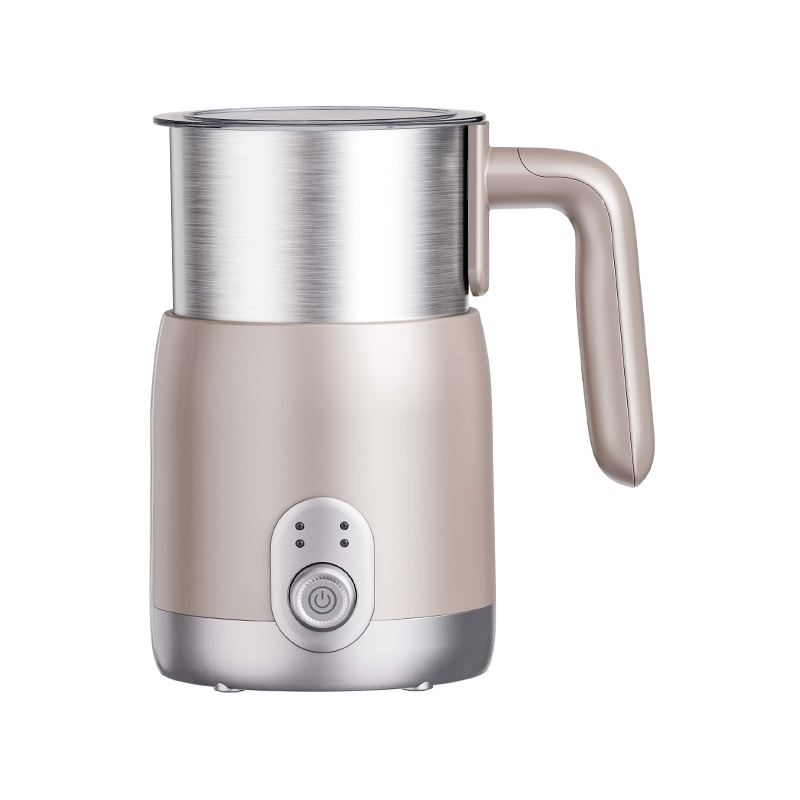 SEE more
SEE more
 SEE more
SEE more
 SEE more
SEE more
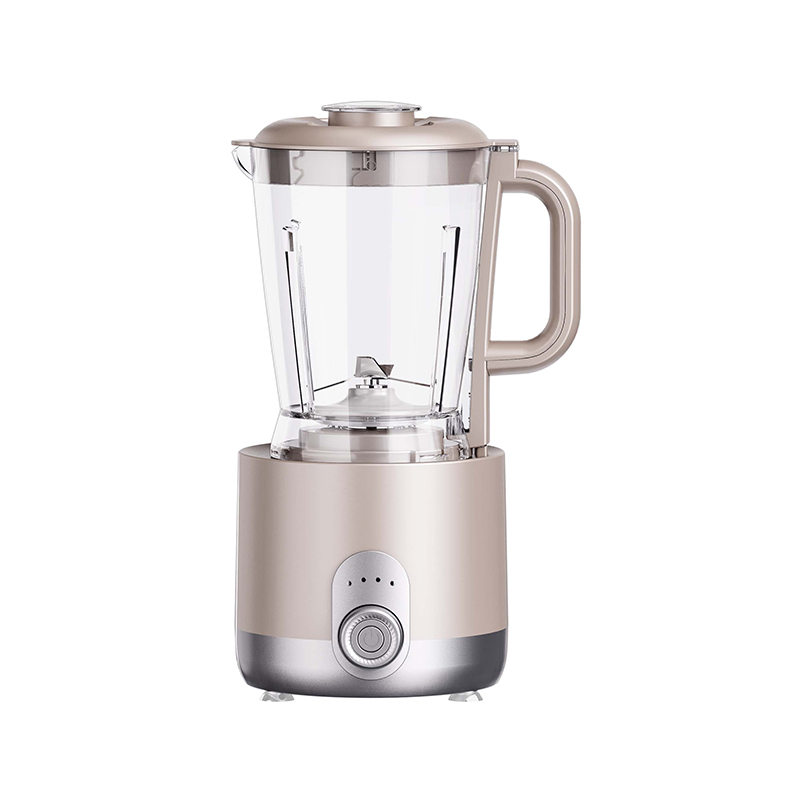 SEE more
SEE more
 SEE more
SEE more
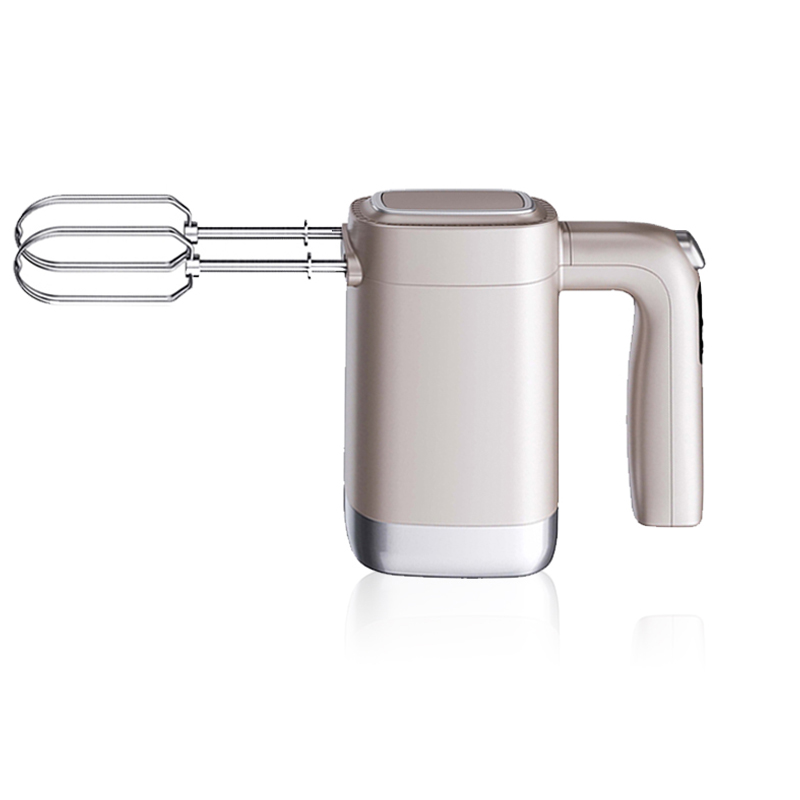 SEE more
SEE more
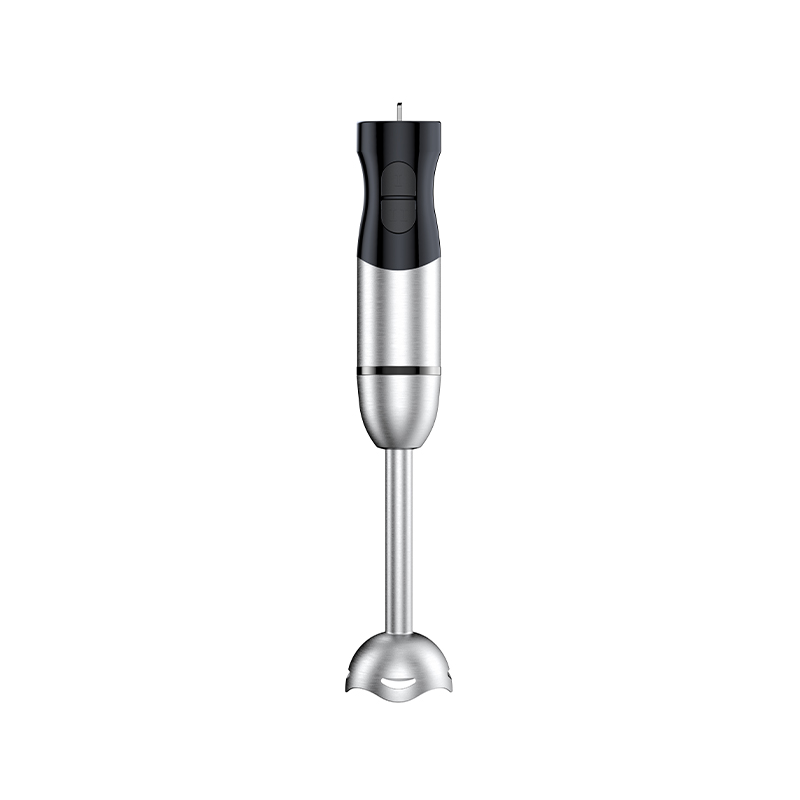 SEE more
SEE more
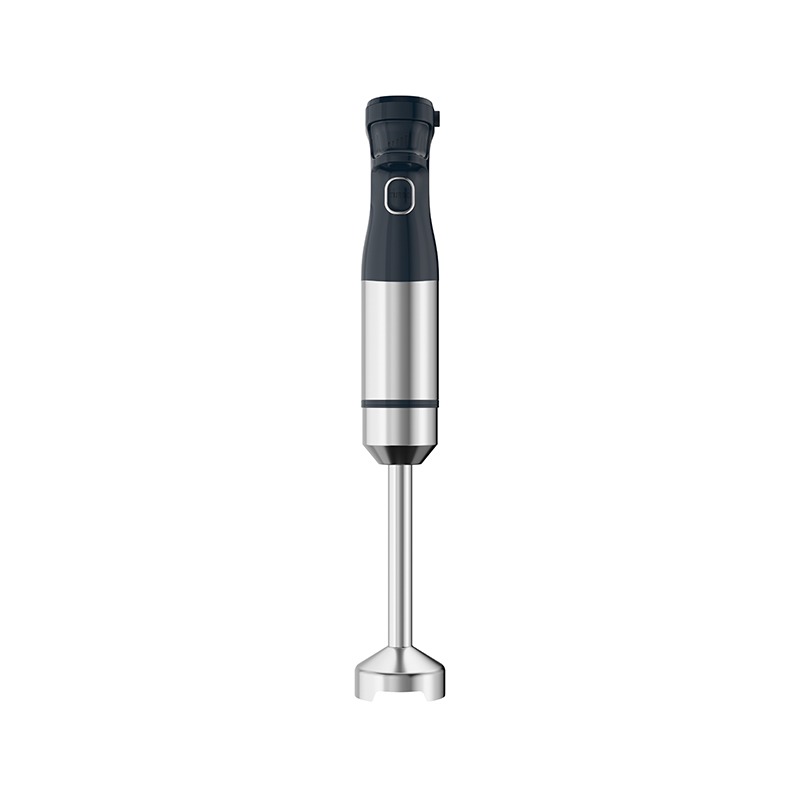 SEE more
SEE more
 SEE more
SEE more
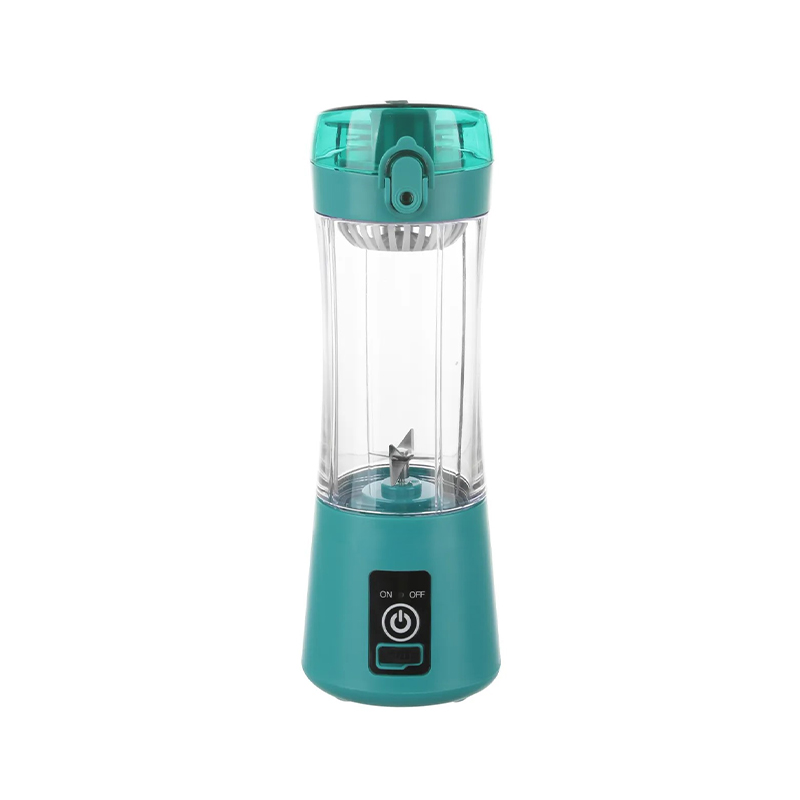 SEE more
SEE more
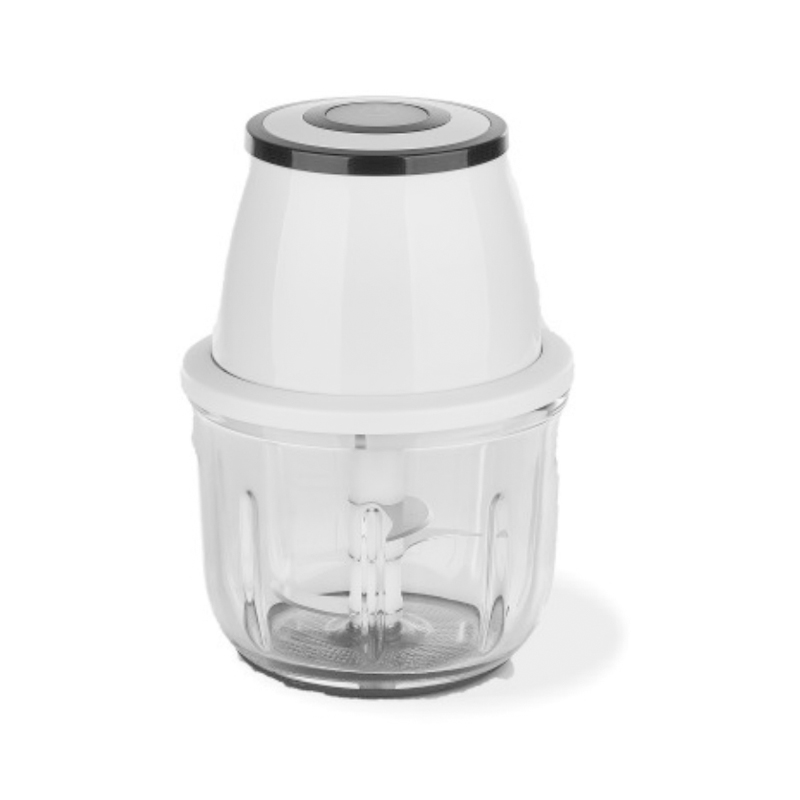 SEE more
SEE more
 SEE more
SEE more
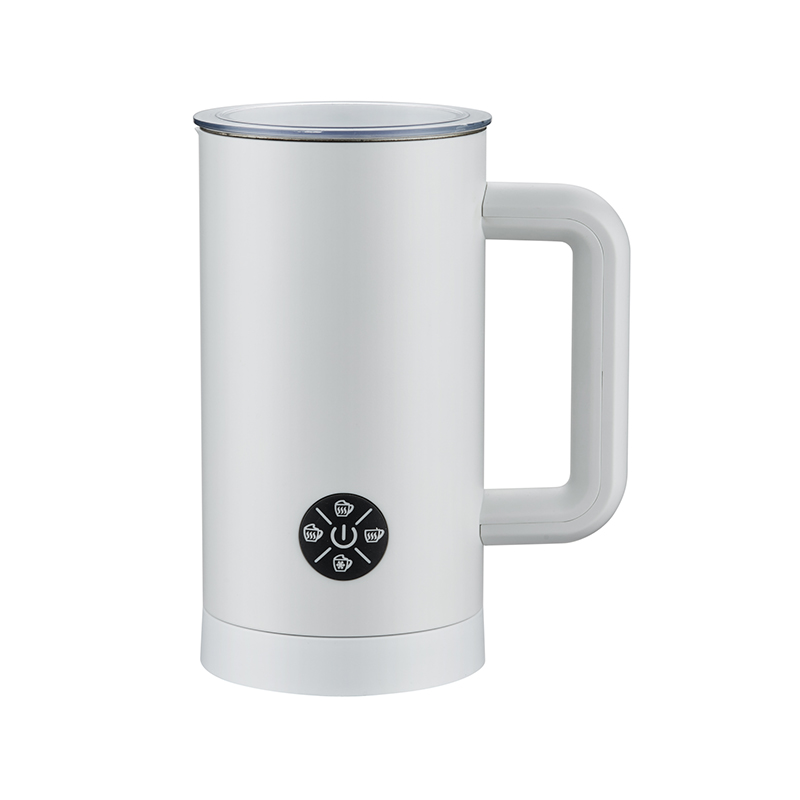 SEE more
SEE more
